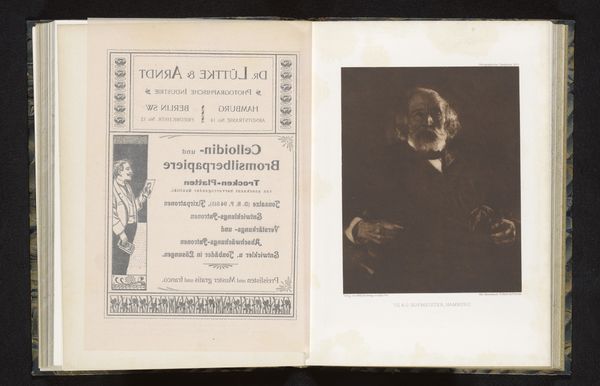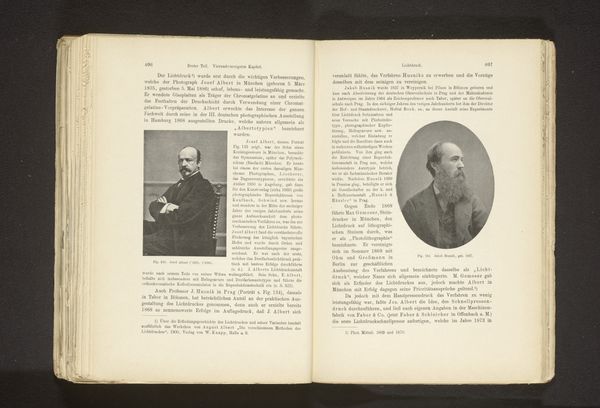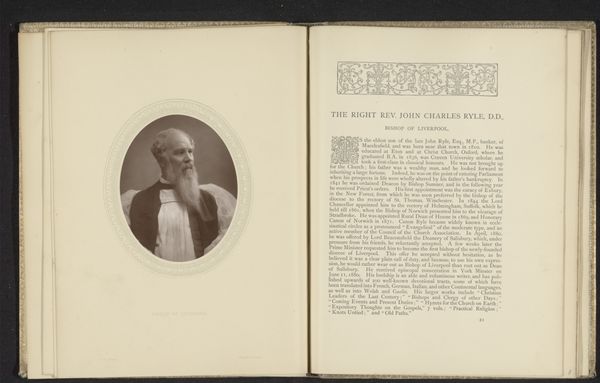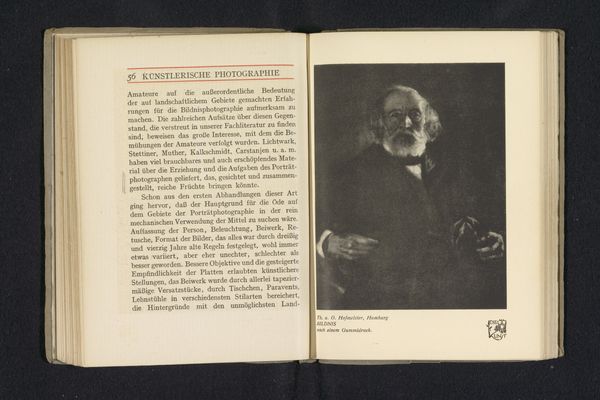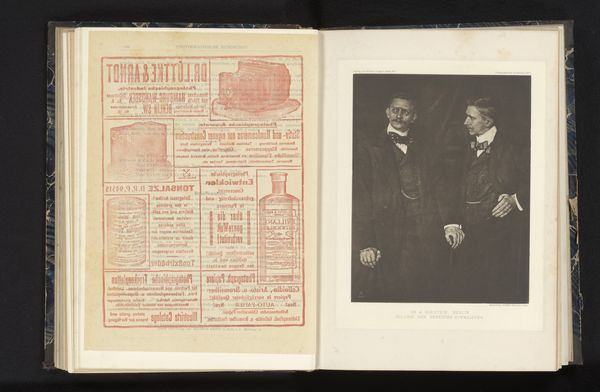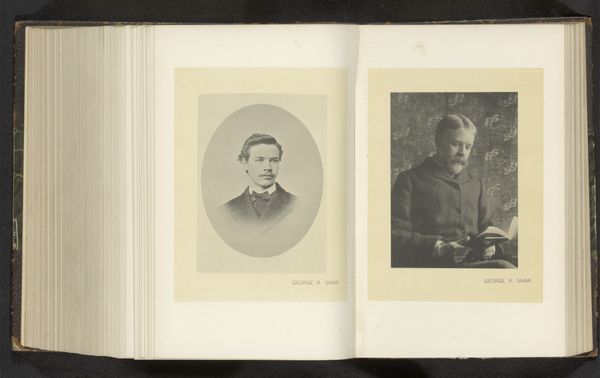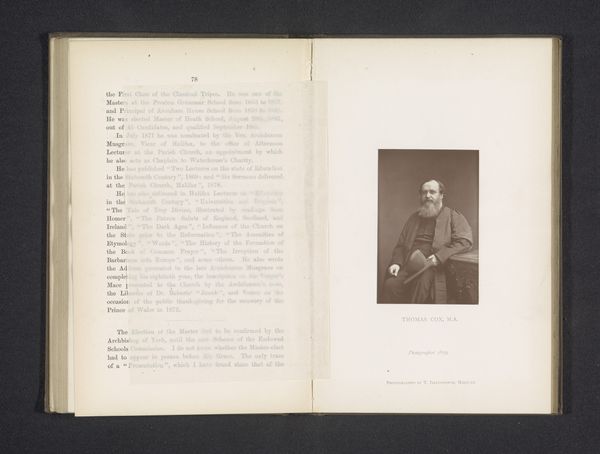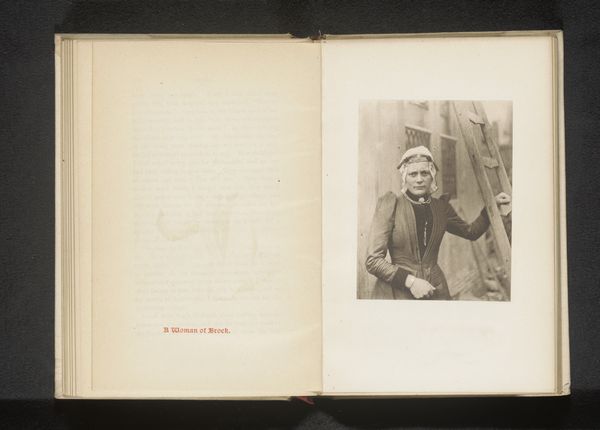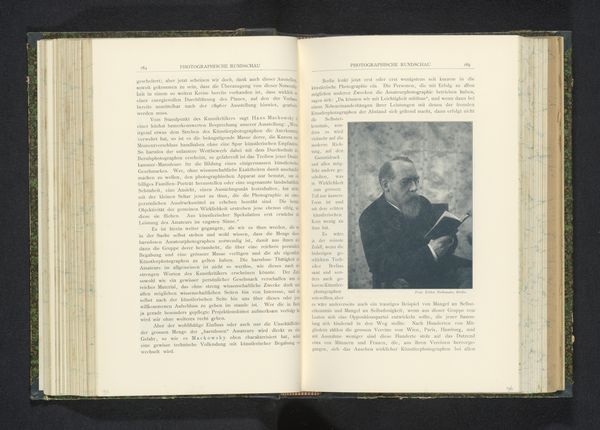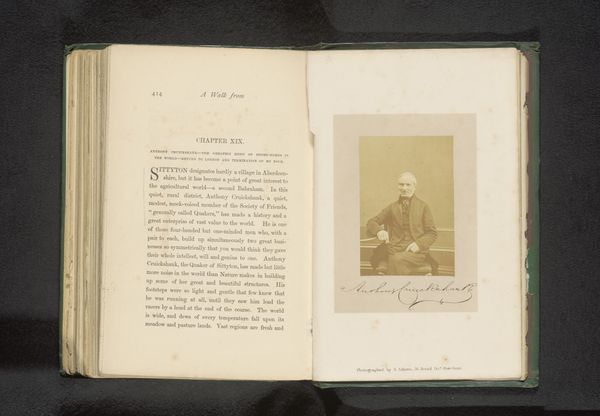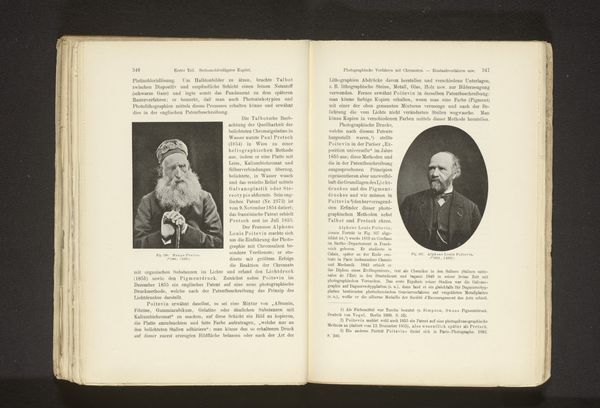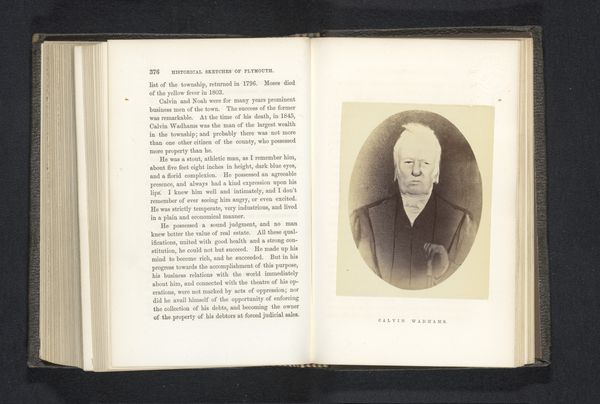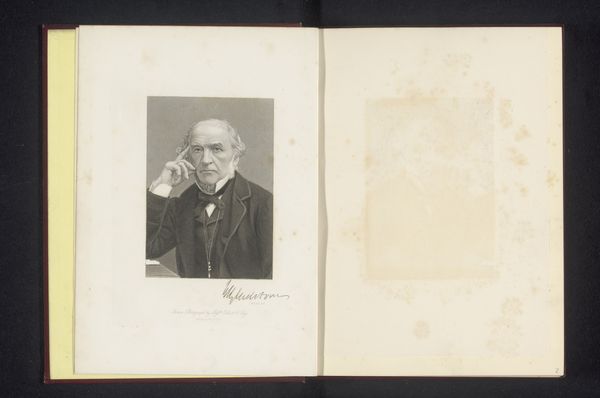
print, photography
#
portrait
# print
#
photography
Dimensions: height 186 mm, width 141 mm
Copyright: Rijks Museum: Open Domain
Curator: This is a photographic print of David Octavius Hill, housed here at the Rijksmuseum. Its creation dates to before 1900. What strikes you first about it? Editor: A somber stillness. The sepia tones lend it an aged, almost ethereal quality. The man in front appears wizened, deeply thoughtful, while the man behind him almost looks as if he were waiting in the wings of a play or a social gathering, keen and anticipatory. Curator: It’s a powerful image. Hill, of course, was a pivotal figure in the early development of photography. Understanding how photography emerged in relation to art institutions gives a new depth to viewing it. Editor: The positioning, particularly of the hand in front of him on the walking stick handle, almost forms a visual poem, doesn't it? It is as if we are meant to note his posture, the hand on the handle representing the wisdom and insight from the depths that Hill has found. And from this, insight has grown from wisdom as the walking stick does in physical proximity to Hill himself. Curator: Exactly. The deliberate framing is telling. Photography was initially received with suspicion by some art circles as lacking creative merit; portraiture was viewed as more of a social record. Hill made huge efforts in Scotland to legitimize the process as one capable of artful composition. Editor: It feels profoundly symbolic of the cultural transition underway, of moving away from portraiture where you had to spend many hours posed in front of a painting, compared to that of new freedom offered by this photographic technique. Curator: Precisely. In many respects, Hill also actively fostered public engagement with the new possibilities and promoted the art form's political dimensions. This photograph represents this exact point of view to those within political spheres. Editor: When viewed together, all elements of visual art here offer a commentary that lingers. In the posture, positioning and visual symbology of the sepia photographic tones, this print creates an almost dream-like window into early views of photography. Curator: It is striking how it has managed to encapsulate a cultural shift so successfully and yet retain a modern eye even now. Editor: Indeed, it seems history itself, as art, reflecting.
Comments
No comments
Be the first to comment and join the conversation on the ultimate creative platform.
